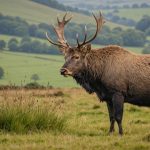Overview of UK Zoos and Their Role in Conservation
UK zoos have evolved significantly in their conservation efforts, adopting a crucial role in wildlife preservation. Initially established as venues for public spectacle, these zoos now emphasize their responsibility towards wildlife conservation. Over the decades, they have formed strategic partnerships with international conservation organisations. These alliances bolster their contribution to global efforts in preserving endangered species.
Central to the mission of UK zoos is their commitment to the conservation of species that face extinction in their natural habitats. By collaborating with like-minded global entities, UK zoos participate in breeding programmes that aim to increase populations of critically endangered animals. This collaboration extends their reach beyond national borders, influencing biodiversity positively worldwide.
A lire en complément : Unveiling the successes and challenges of rewilding projects throughout the uk
Furthermore, these zoos facilitate conservation research, serving as live laboratories where wildlife experts study animal behaviour and health. Such research provides vital data that informs broader conservation strategies and efforts. Through these multifaceted contributions, UK zoos are not just passive spectators but active participants in global wildlife conservation initiatives, demonstrating their dedication to preserving endangered species and enhancing their habitats.
Notable UK Zoos and Their Conservation Programs
UK zoos play a significant role in conservation initiatives, addressing species recovery and habitat preservation. Their efforts extend beyond entertainment, engaging in influential programs.
Avez-vous vu cela : Top eco-conscious farming techniques for sustainable agriculture in the uk’s upland areas
Zoo A: Mission and Key Projects
Zoo A stands as a beacon for noteworthy conservation initiatives. Focusing on species recovery, it partners with global organizations. Through breeding programs for endangered species, Zoo A works tirelessly to restore animal populations to their natural habitats. One of the standout projects is its Gorilla Conservation Project, which aims to preserve these primates through research and collaboration with African parks. By combining research with action, Zoo A contributes significantly to the survival of threatened species.
Zoo B: Community Involvement and Education
Zoo B focuses on engaging the community in its mission. Education and public engagement are at the heart of its strategy. The zoo hosts workshops and outreach programs to raise awareness about species recovery. Visitors are encouraged to learn about conservation efforts and participate in volunteer activities, fostering a sense of responsibility towards wildlife. The emphasis on interactive experiences aims to inspire local action for global issues.
Zoo C: Research and Species Breeding Programs
At Zoo C, research aligns closely with conservation. The zoo highlights the importance of breeding programs. Studies conducted here contribute to understanding animal behaviours and environmental needs, impacting conservation worldwide. Their successful breeding of critically endangered Amphibian species is a testament to their commitment, supporting habitat restoration projects and ensuring species survival.
Case Studies of Successful Conservation Initiatives
Exploring the realm of conservation reveals a multitude of case studies that exemplify success in reversing the trend towards extinction for many endangered species. One notable approach involves recovery programs led by UK zoos, where collaboration with wildlife trusts and non-governmental organisations (NGOs) plays a pivotal role.
These partnerships leverage expertise and resources, enabling enhanced conservation efforts. UK zoos often serve as breeding grounds for endangered species, creating controlled environments where populations can thrive. An example includes the successful recovery of the Mauritius kestrel, once deemed the world’s rarest bird, thanks to coordinated efforts between zoos and conservation groups.
Partnerships with wildlife trusts facilitate on-the-ground conservation, addressing challenges like habitat destruction and poaching. NGOs contribute by advocating for policy changes and providing funding for conservation projects. This multifaceted approach has shown tangible, evidence-based impacts on specific endangered species populations.
Statistics indicate significant population increases for species such as the white rhino and Amur leopard. These conservation successes offer a template for future initiatives, highlighting the importance of collaboration and sustained effort. By documenting these achievements, stakeholders can study effective strategies, optimising ongoing and future conservation work, and ultimately, securing a future for endangered species.
Challenges Faced by UK Zoos in Conservation Efforts
UK zoos encounter a myriad of conservation challenges, impacting their ability to preserve biodiversity and protect endangered species. One of the primary issues is funding limitations. Many zoos operate under tight budget constraints, which can restrict their capacity to maintain or develop conservation programs and care for the wide variety of animals they house. Securing sufficient funding often hinges on attracting visitors, complicating the situation when economic downturns or other external factors diminish attendance.
Ethical debates surrounding zoos and captivity also significantly challenge these institutions. Certain groups argue that keeping animals in captivity, even for conservation purposes, is inhumane, and some demand alternatives be sought. These ethical considerations can result in restrictive regulations and heightened scrutiny, further complicating zoos’ operational logistics.
Public perception heavily influences the success of conservation initiatives. Many view zoos with suspicion, questioning their commitment to authentic conservation efforts. Misunderstandings about the role of modern zoos in species protection can deter financial support and community engagement. Overcoming these challenges necessitates transparent communication and education about the critical conservation work UK zoos do, helping to shift public perception towards recognizing these institutions as vital allies in global biodiversity preservation.
Educational Programs and Public Engagement Strategies
In today’s rapidly changing world, wildlife awareness is more crucial than ever. Zoos in the UK are spearheading efforts through diverse educational programs and public engagement initiatives to foster this awareness.
Programs Targeting Schools and Communities
UK zoos have developed specialized programs aimed at schools and local communities to inspire future generations about wildlife preservation. These programs often include interactive workshops, guided tours, and tailored lessons that align with curriculum standards, ensuring that students gain both academic knowledge and an appreciation for conservation efforts.
Online Resources and Campaigns
The digital age provides ample opportunities to enhance public engagement. Zoos are increasingly utilizing online platforms to disseminate information, running campaigns that encourage participation from a broader audience. Through social media and interactive websites, they share educational materials and host virtual events, reaching individuals who might otherwise never set foot in a zoo.
Impact of Visitor Experiences on Conservation Awareness
Direct interaction with animals and nature within zoo settings significantly boosts conservation awareness among visitors. Experiential learning opportunities, such as behind-the-scenes tours and animal encounters, leave a lasting impression, often translating into increased support for conservation initiatives. Participating in these experiences is a tangible way for individuals to understand the vital role zoos play in preserving biodiversity.











